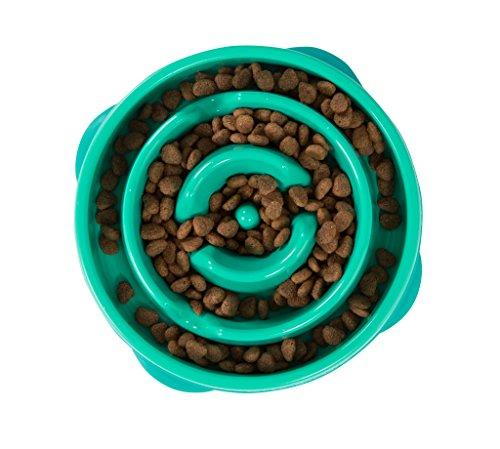21 Simple Tricks to Make Your Dog Happier, Smarter, and Less Bored Every Day
- posted: Sep. 10, 2019
Keeping your dog in shape is an important part of dog wellness, but it’s also crucial to provide mental stimulation and enrichment for your dog.
I can tell you that all dogs (and cats!) need enrichment. Every pet parent knows what it’s like when their four-legged friend seems on edge or appears to be crawling up the walls—even after exercise. In these cases, their dogs need some enrichment. A walk doesn’t always cut it, though if your dog isn’t getting a daily walk—for whatever reason—enlisting the help of a trusted dog walker is a great place to start.
Dog Enrichment: What and Why
Dogs are meant to live active lives, rather than sleep until their owners come home. Many studies, especially those conducted by zoos, have shown that enriching an animal’s environment improves the psychological and physical well-being of animals.
The co-authors of Beyond Squeaky Toysbreak down enrichment for animals into six different categories. Read on for simple, practical ways to provide enrichment for your dog each day. Note that all dogs are individuals, so not all of these activities will appeal equally to all dogs. Smaller dogs, for instance, might do better with a pop-up tunnel indoors; some dogs love bubbles while others are indifferent, and some dogs are not food-motivated. The key is to experiment and find what works for you.
6 Types of Enrichment for Dogs
Social enrichment
Provides opportunities for a pet to spend time with other animals and people in new, different environments. Examples include:
- Trips to the beach. My three dogs enjoy a romp on the beach perhaps more than any other activity.
- Going shopping. We work on leash reactivity at Home Depot, as it’s a great environment that’s safe and pet-friendly.
- Going to the office. My husband takes our dog Sherman to work on Thursdays.
Social enrichment is easy to provide even if you’re a working pet parent. Occasional drop-in visits from a pet sitter, say, give your dog the opportunity for an extra play session midday. For bored or restless dogs, daycare can be a good option, too. Even if it’s not every day, it gives your dog something to look forward to during the week.
Cognitive enrichment
Provides opportunities for thinking and problem-solving. Examples include:
- Puzzle toys. These are super-popular in my house and there are many types to choose from. Fantastic for dogs that are constantly busy and need a job between meals.
- K9 Nosework. Another sport we’re big fans of. All dogs can excel at this odor game.
- Hide and seek. Ask your dog to stay, and then run and hide from your pet before calling them. This also builds a strong recall! Treat generously when your dog finds you.
Physical enrichment
Enhances the animal’s living space by changing or adding complexity to the environment.
- Provide a bury/dig pit. This is simple. Buy a dog or kiddie pool and fill it up with sand. You can even hide toys for your dogs to dig up.
- Blanket forts and tents. Children enjoy this as well!
- Pop-up tunnel. Similar to what’s used in agility, these can be purchased online, and our doxies love tearing through them in the backyard.
Sensory enrichment
Enrichment that stimulates any of the five senses. Nosework is another good example.
- Bubbles, bubbles, and bubbles! You can even buy bacon-flavored bubbles for dogs. No joke.
- Herbs and spices. Mint and cinnamon are not toxic and can be added to pet toys to encourage sniffing.
- Farm animal scents. I gave a friend with goats an old tee shirt and she hung it in the barn for a few days. I then brought it home and tied it to a tug toy.
- Wind chimes can be fun toys that offer new sounds to cats and dogs.
Feeding enrichment
Make mealtime more challenging and interesting. This includes how food is presented.
- Treats under a blanket. Simple—just hide them out of sight!
- A puzzle feeder can slow down gulpers and stimulate the mind.
- Ice treats. Try freezing small toys in giant ice cubes and see how long before they can get access to them! Pro tip: do this on a surface you can clean easily.
- Muffin tin ball feeder. Cheapest nosework game you’ll find. Literally, put tennis balls in the muffin tin and hide food under some of the balls.
- Hand feeding is a great way to bond with your dog, especially when you first meet.
Toy enrichment
Objects that can be manipulated in some way—explored via feet, tail, and mouths! (Always take age into consideration).
- Remote and wind-up toys. Allow your dog to watch the toy, but don’t put let them put it in their mouth!
- Lure and fishing pole toy. Attach a long line of yarn to a fishing pole and while supervised, let your dog tug until they get bored.
- Stuff old clothing with anything smelly, like grass clippings.
The bottom line
Enrichment does more than just alleviate boredom. Shelters have discovered that enrichment can make dogs more adoptable. It can also help your dog live a longer, happier life, and improve your bond. In other words, it’s a no-brainer!
Enrichment doesn’t take a lot of time or money. Many of these tips are low maintenance and take just a few minutes, but will go a long way with your dogs. Try a few, see which sticks, and then weave it into your dog’s routine.
Location
Find us on the map
Dixie Animal Hospital
14701 S Dixie Hwy
Miami, FL 33176, US
Office Hours
Our Regular Schedule
8:00 am - 5:00 pm
8:00 am - 5:00 pm
8:00 am - 5:00 pm
8:00 am - 5:00 pm
8:00 am - 5:00 pm
8:00 am - 2:00 pm
Closed


